| Track Plans | Photos | Models |
History
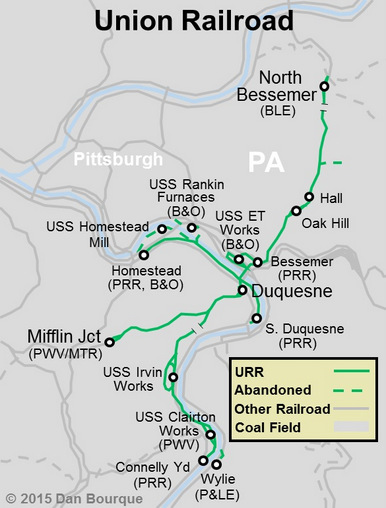 The Union Railroad was formed in 1896 by Andrew Carnegie to serve his still-growing steel industry along the Monongahela River south of Pittsburgh, Pennsylvania. The Union connected with several railroads around Pittsburgh, but the most important connection was with its corporate partner, the Bessemer and Lake Erie. To ensure reasonable shipping rates and a continual supply of ore and limestone to his mills, Carnegie formed the Pittsburg, Bessemer and Lake Erie, the B&LE’s predecessor, which completed the last section of track across the Allegheny River to East Pittsburgh where it connected with the Union Railroad and formed an unbroken line of Carnegie-controlled railroad from the steel mills to the ore ports of Lake Erie. In 1901, both railroads, along with Carnegie Steel, became part of United States Steel.
The Union Railroad was formed in 1896 by Andrew Carnegie to serve his still-growing steel industry along the Monongahela River south of Pittsburgh, Pennsylvania. The Union connected with several railroads around Pittsburgh, but the most important connection was with its corporate partner, the Bessemer and Lake Erie. To ensure reasonable shipping rates and a continual supply of ore and limestone to his mills, Carnegie formed the Pittsburg, Bessemer and Lake Erie, the B&LE’s predecessor, which completed the last section of track across the Allegheny River to East Pittsburgh where it connected with the Union Railroad and formed an unbroken line of Carnegie-controlled railroad from the steel mills to the ore ports of Lake Erie. In 1901, both railroads, along with Carnegie Steel, became part of United States Steel.
In an effort to simplify its operations by eliminating steep grades at the south end of the railroad, the B&LE leased its southernmost four miles of railroad, from North Bessemer to East Pittsburgh, to the Union in 1906. North Bessemer became the largest interchange on the railroad with a yard capacity of nearly 3,000 cars. B&LE crews brought ore and limestone south, and the Union brought coal, coke and steel products north. In 1952, the Union bought the tracks to North Bessemer from the B&LE.
In its heyday, the Union served several large facilities including the US Steel blast furnaces at Rankin (Carrie), Edgar Thompson and Duquesne, US Steel’s Homestead Mill and the newer USS Irvin Works, and US Steel’s coke works at Clairton, the largest coke works in the nation. Following the decline of the steel industry in the 1970s and ’80s, many of these facilities were shut down and dismantled, though as of 2015, the Clairton Coke Works, Edgar Thompson Works and Irvin Works remain open.
Operations
The Union is essentially a 30-mile industrial switching railroad with some major customers and heavy tonnage. Despite the heavy tonnage and hilly terrain, the Union relies on switching locomotives, though often in sets of four of five. The Union’s motive power is housed and serviced at Hall, PA not far from North Bessemer. North Bessemer is the hub of activity on the north end of the railroad and still serves as the primary source of ore and the main outlet for coal bound for the Great Lakes. The yard at Duquesne is the center of action for the south end of the railroad where most of the industry and interchanges lie. At the height of operations, the Union utilized four bridges across the Monongahela River, but only the bridge between Duquesne and Bessemer remains in service.
The best way to think of operations on the Union Railroad is to understand the “circle of life” of the area’s steel industry. Raw ore arrived via the B&LE at North Bessemer. In early years, this was ore from the Missabe Range in Michigan shipped across the Great Lakes and unloaded at the B&LE’s large port at Conneaut, Ohio. From 1958-1986, much of the ore arrived as sinter processed in the US Steel plant at Saxonburg along the B&LE. From North Bessemer, the Union fed this ore to the blast furnaces at Rankin (Carrie), Duquesne and Edgar Thompson. Coke was essential to the furnaces, and this coke came from the huge Clairton Coke Works on the Union’s Clairton branch. Though the B&LE and other connecting railroads served coal mines in the area, Clairton received its coal via barge and processed it into high-grade coke for the steel industry. Clairton coke fed the US Steel furnaces and many other furnaces in the nation, so the Union was kept busy not only shuttling its own coke racks (oversized hoppers) back and forth but interchanging long strings of hoppers filled with coke to neighboring railroads such as the PRR, B&O, P&WV, P&LE and their successors. Once the blast furnaces did their job, the raw steel was shipped to nearby mills such as US Steel’s Homestead Works or Irvin Works to be rolled into sheets or other more valuable commodities. These products were loaded onto flatcars, gons or other cars and interchanged to the Union’s neighbors. In addition to road duties moving cars between interchanges and industries, the Union also performed some of the switching duties within the complexes although US Steel also operated its own small fleet of switchers at the larger industries.
While coal mines along the Union played out early in the 20th century, the Union served as a major conduit of coal. Coal from barges were transloaded to hoppers at the South Duquesne Wharf where the Union would transport them to the B&LE for the trip to Conneaut. The Montour also used its trackage rights over the P&WV (later the Norfolk & Western) to interchange Great Lakes bound coal from its mines after processing at its large Champion Prep Plant. In addition to coal and steel-related materials, the Union also served many industries, both large and small, along its lines adding a variety of traffic.
Motive Power
The URR dieselized in the early 1940s. While it has used a few lighter 6-axle offerings from Baldwin and EMD, the Union is known for being run almost entirely by switchers which work best on the Union’s tight curves. The roster has been filled by a mix of new and used locomotives, including many transferred from corporate partners B&LE, DM&IR and EJ&E. EMD SD9s and SD38-2s have been used on the line, but they were only suitable for the mainline and select industries such as the coal wharf at South Duquesne.
Union Railroad Diesel Roster
| Number | Builder | Model | HP | Notes |
| 1-9 | EMD | SW1500 | 1500 | New 1972-73 |
| 10-33 | EMD | MP15DC | 1500 | New 1974-77 |
| 50-54 | EMD | SD38-2 | 2000 | ex-B&LE, acq 2001, traded 2002 |
| 60 | EMD | SD-9 | 1750 | ex-EJ&E, DM&IR, acq 2001 |
| 101-103 | EMD | SW1001 | 1000 | New 1976 |
| 406-409? | Whitcomb | 65DE19A | 560 | ex-US Army, acq 1946, sold 1954 |
| 451-454 | Alco | S1 | 660 | New 1947, sold 1962 |
| 455-476 | EMD | SW1 | 600 | New 1949-50 |
| 500-505 | Baldwin | VO1000 | 1000 | New 1940-41 |
| 506-535 | Alco | S2 | 1000 | New 1941-48 |
| 536-537 | Alco | S4 | 1000 | New 1951 |
| 541-560 | EMD | NW2 | 800 | New 1949 |
| 563-573 | EMD | SW9 | 1200 | ex-DM&IR, acq 1960 |
| 575-588 | EMD | SW9 | 1200 | New 1951-52 |
| 585 (2nd)-587 | EMD | SW1200 | 1200 | ex-FEC, acq 1972 |
| 601-612 | Alco | RS2 | 1500 | New 1958-1949 |
| 613-624 | Baldwin/EMD | DRS-6-6-1500/M | 1500 | New 1949, rebuilt with EMD prime movers |
| 625-627 | Baldwin | AS616 | 1600 | New 1951 |
| 630-633? | EMD | SD9 | 1750 | ex-DM&IR |
| 701-702 | EMD | TR5A | 1200 | Rebuilt from SW9 |
| 701C-704C | EMD | TR5B | 1200 | Rebuilt from SW9 |
| 847 | EMD | SD9 | 1750 | ex-B&LE, acq 1999 |
| 1201 | EMD | SW1200 | 1200 |
NOTE: This roster was created from multiple sources and may be incomplete. Number ranges with “?” are based on low and high numbers found in references and not definitive roster data–intermediate numbers not confirmed.
Related Products:
Sources:
- Lorenzo, R. and Clark, N. Bessemer and Lake Erie Railroad In Color, Morning Sun Books 1994
- Bever, R. The Bessemer and Lake Erie Railroad 1869-1969, Golden West Books 1969
- Don’s Depot Union Railroad page
- Wikipedia Union Railroad page




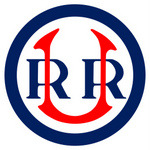
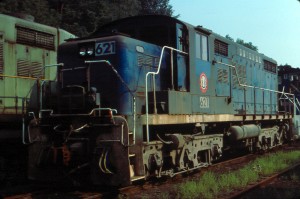
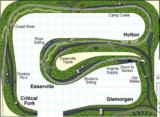 Union RR Track Plans
Union RR Track Plans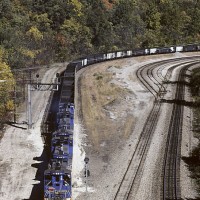
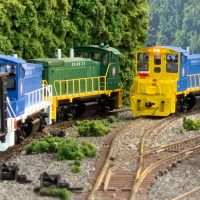 URR Models
URR Models